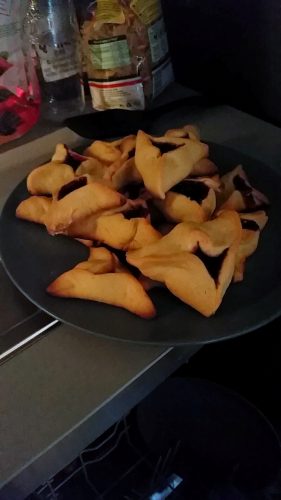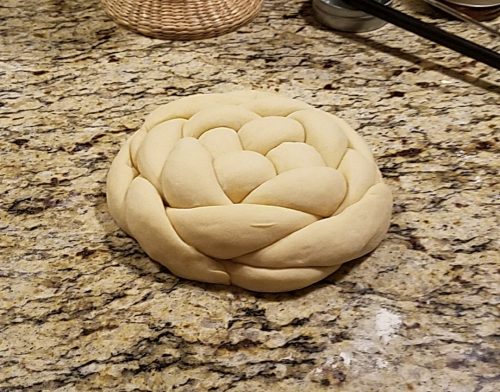Mise en place: Preparedness in the Classroom

A blog post by Museum Educator (and former JMM intern) Marisa Shultz! To read more posts from Marisa, click here.
Cara Bennet’s pop-up exhibit Just Desserts: Baking and Jewish Identity (which is on display here at the Museum until September 27th), inspired me to think about the relationship between cooking and teaching!
Whether it’s kneading challah, baking kugel, or folding hamantaschen, I really love to cook; it’s an activity I take part in almost every day, save for when I have leftovers from the night before. To me, cooking creates a sense of togetherness and connection, both with those whom you are cooking for, and with the author of the recipe. Plus, little is better than enjoying the fruit of one’s labors in the form of a homemade meal (and yes, that pun was intended!).

Have you ever heard of the term mise en place? It’s a fancy French term they teach aspiring chefs in culinary school that roughly means “everything in its place.” For the chef, this means not only having already chopped, measured, and prepared all of the necessary ingredients before even beginning a recipe, but also having all of the necessary equipment (even the humble tea towel), in their designated spaces. Plus, this means that the chef has read the recipe at least once or twice, understands what needs to happen, and has already essentially choreographed his/her movements to ensure that everything goes smoothly while cooking.
Now, I’ll admit, I don’t always cook or bake with the idea of mise en place in mind; in fact I’m pretty bad at it. There I am panicking in the kitchen, simultaneously counting the seven cups of flour that goes into my challah recipe while trying to remember what ingredient goes into the mixer next! Luckily for me, this organized chaos approach, has worked well for me most of my life, and I’ve only ever had to throw out one batch of challah dough.

But, when it comes to teaching a class or leading and educational program, I don’t like taking those kinds of risks. I don’t want students’ experiences to be marred by a lesson or program that I stumble over because I wasn’t prepared when they walked through the door. When it comes to teaching, I adopt this concept of mise en place. This doesn’t mean that there won’t be things that have to be adjusted or even changed on the spot. Flexibility is still an important and necessary piece of the education puzzle; however, this approach does mean that I can prepare a great deal ahead of time to help the program run smoothly. To do so means not having to worry about those things while actively teaching. This means that before the students have walked through the door, I have double checked that we have enough materials for the expected number of students, and that all of my materials are in their places for swift and easy access. This means that I have reviewed the steps to the program and my own choreography.
What is so great, I have found, is that when I approach teaching with the concept of mise en place, those worries of how much time should I give them in the exhibit, or did I remember to bring my answer key to the orientation space, all melt away. What I am left with is the ability to focus on the students’ learning and to enjoy the experience.
